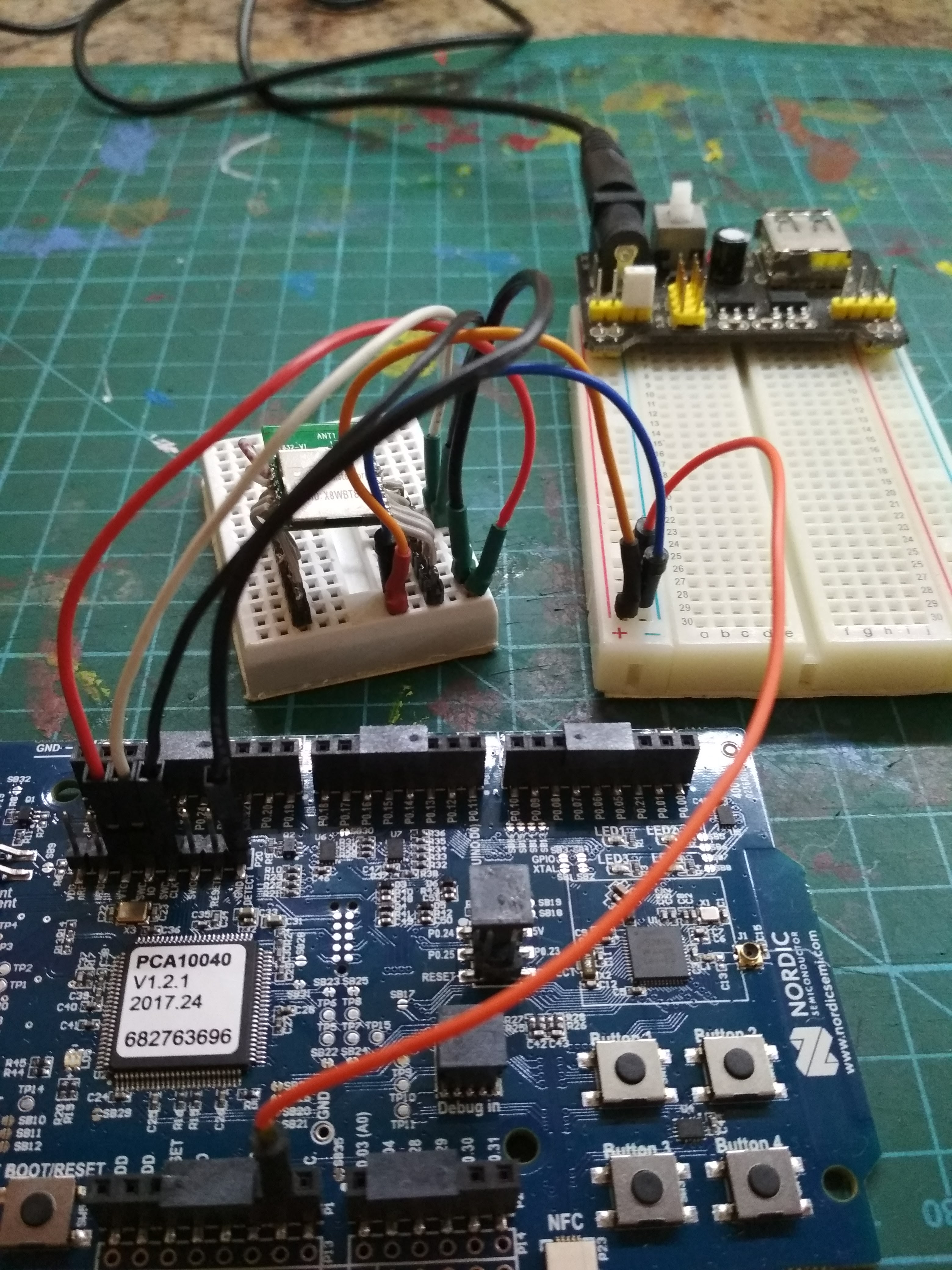I have read articles on the forum, watch youtube but still no luck. Actually I failed to find step by step tutorial how to do it from start to the end. Most of them touch wiring stuff only.
Hardware:
- NRF52-DK (www.nordicsemi.com/.../nRF52-DK)
- BT832 (www.fanstel.com/.../)
Wire thing up, just like devzone.nordicsemi.com/.../ or devzone.nordicsemi.com/.../ (tried both, with external 3.3v power for the BT832 module and w/o)

Try to flash:
Using any ble peripheral example from SDK:
- Cd pca10040/s132/armgcc
- Make, make flash_softdevice, make flash
Using NRFog Studio:
- See only 2 regions. No matter power I BT832 externally or no.
- Re-flash both softdevice and application with appropriate binaries.
Both actions successfully flash NRF52-DK only, but the BT832 left blank. How I check - I try to discover BLE devices using phone (nRF Connect application). NRF52-DK - fine, but BT832 invisible.
What am I doing wrong? Wiring schema I found in many places and it seems fine. Maybe I should programm is some other way and specify some extra attributes to point external device, not just NRF52-DK?
